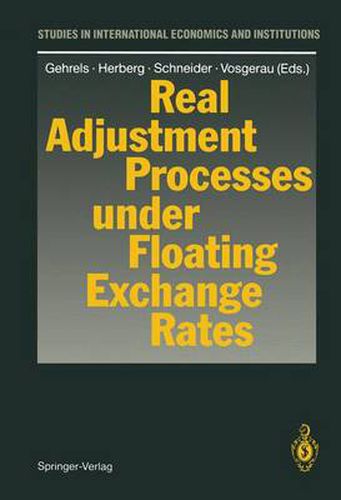Readings Newsletter
Become a Readings Member to make your shopping experience even easier.
Sign in or sign up for free!
You’re not far away from qualifying for FREE standard shipping within Australia
You’ve qualified for FREE standard shipping within Australia
The cart is loading…






This title is printed to order. This book may have been self-published. If so, we cannot guarantee the quality of the content. In the main most books will have gone through the editing process however some may not. We therefore suggest that you be aware of this before ordering this book. If in doubt check either the author or publisher’s details as we are unable to accept any returns unless they are faulty. Please contact us if you have any questions.
Helmut Schneider 1. The Formulation of the Research Programme 1. In the late sixties the acceleration of US inflation revived the discussion of the fifties about the superiority of flexible exchange rates: The US balance of payments deteriorated since 1965, the dollar shortage after World War II changed to a dollar surplus. The import of US inflation by their main trading partners intensified political pressures so that at the beginning of the seventies most leading countries decided, contrary to the rules of the Bretton Woods agreement, to stop their intervention in the market for foreign exchange and to let the exchange rates be determined by market forces. It is worthwhile recalling that at that time one had only very limited experience with the regime of flexible exchange rates: The most important case, the floating of Canadian against the US dollar, could not be generalized to a world where nearly all important countries adhered to the regime of flexible exchange rates. ! - But one really had rich experience with destabilizing capital flows (or hot money ) that forced monetary authorities to adjust exchange rates in a system of managed flexibility to the expecta tions of speculators .
$9.00 standard shipping within Australia
FREE standard shipping within Australia for orders over $100.00
Express & International shipping calculated at checkout
This title is printed to order. This book may have been self-published. If so, we cannot guarantee the quality of the content. In the main most books will have gone through the editing process however some may not. We therefore suggest that you be aware of this before ordering this book. If in doubt check either the author or publisher’s details as we are unable to accept any returns unless they are faulty. Please contact us if you have any questions.
Helmut Schneider 1. The Formulation of the Research Programme 1. In the late sixties the acceleration of US inflation revived the discussion of the fifties about the superiority of flexible exchange rates: The US balance of payments deteriorated since 1965, the dollar shortage after World War II changed to a dollar surplus. The import of US inflation by their main trading partners intensified political pressures so that at the beginning of the seventies most leading countries decided, contrary to the rules of the Bretton Woods agreement, to stop their intervention in the market for foreign exchange and to let the exchange rates be determined by market forces. It is worthwhile recalling that at that time one had only very limited experience with the regime of flexible exchange rates: The most important case, the floating of Canadian against the US dollar, could not be generalized to a world where nearly all important countries adhered to the regime of flexible exchange rates. ! - But one really had rich experience with destabilizing capital flows (or hot money ) that forced monetary authorities to adjust exchange rates in a system of managed flexibility to the expecta tions of speculators .